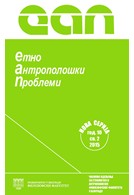Српска породица у позном Средњем веку
The Serbian family in the late Middle ages
Author(s): Siniša MišićSubject(s): History
Published by: Филозофски факултет, Универзитет у Београду
Keywords: family; nuclear family; cooperative family; marriage; children; dowry; Serbia; middle ages
Summary/Abstract: Marriage in Serbia in the middle ages was conducted only between persons belonging to the same social class. It was arranged and the woman would bring a dowry which would be controlled by the husband as long as the marriage lasted. Male children would inherit their father. Daughters played a significant role in connecting families through marriage. A man, unlike a woman would not bear any consequences in case of adultery. The consequence of this was a large number of extramarital children.In the Serbian state in the middle ages the family, or the “home” (kuća as it is named in sources), was the basic unit of society. The family could be nuclear or cooperative. Through the analysis of diplomatic data, as well as the first Turkish books – defters, one can see that one quarter of the population lived in nuclear families. More than half of the families which lived in cooperative arrangements were made up of small cooperatives numbering no more than two or three members. Almost all cooperative families were made up of father-son or brotherly cooperatives. The type of cooperative was largely influenced by the length of life or the capability of giving birth. The source material shows a small number of large cooperatives.Nuclear families and cooperative families are present in both the nobility and the small folk (dependents). There is no difference in the family structure with regard to social status. Nuclear families are omnipresent, and the characteristics of cooperative families are the same in nobility, serfs, sokalniks (a class a little above the serfs, who were most often servants, with certain privileges), priests, repairmen or fishermen. The difference is seen only within the Vlach population where in the cooperative there are more sons in law than in other populations. This is the result of an attempt of an agrarian population to move toward the status of herdsmen which was more favorable for them.
Journal: Етноантрополошки проблеми
- Issue Year: 10/2015
- Issue No: 2
- Page Range: 357-381
- Page Count: 25
- Language: Serbian

